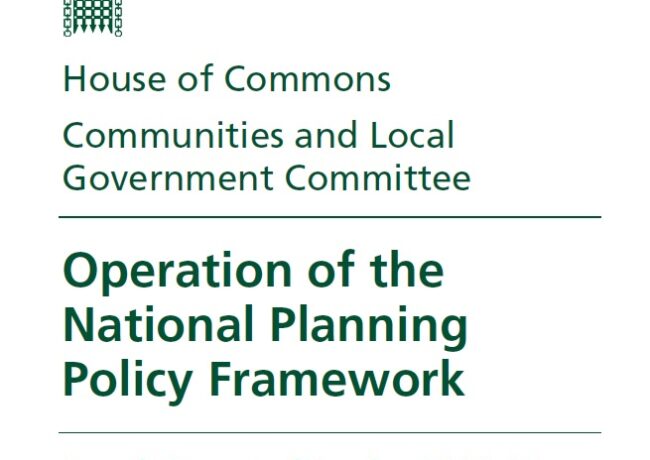NPPF needs major overhaul, say MPs
 Gary Halman, managing partner at HOW Planning, responds to the report published this morning by the Communities & Local Government Commons Select Committee into the effectiveness of the National Planning Policy Framework.
Gary Halman, managing partner at HOW Planning, responds to the report published this morning by the Communities & Local Government Commons Select Committee into the effectiveness of the National Planning Policy Framework.
The Select Committee looked at the NPPF's practical operation two-and-a-half years after it was published. Committee members took evidence from a wide range of sources, including local authorities, developers, consultants and house builders, and local community groups.
The committee found:
Performance by planning authorities in getting local plans in place is hopelessly slow. 41% of councils do not have an adopted local plan and of those that do have one, only 21% have been adopted since the operation of the NPPF; the clear risk being that the older ones don't properly reflect the up-to-date national policy.
There is a recommendation that councils should regard planning as a "front line" service, accord it proper priority and resources and get on with producing a local plan, as those who don't have one in place "are letting their communities down" and effectively "surrender their ability to influence the future development of their local area".
The committee have called for a statutory requirement to get councils to have local plans in place within three years of the relevant legislation, with penalties if they don't. There is little if any sympathy for councils that haven't got their act together.
Neighbourhood plans are supported as a means of giving power to local communities, though there is some concern that they are becoming the preserve of the middle classes, with more being produced in well-heeled, well-organised middle class areas as a means generally to stop development. There is a strong criticism that the relationship between local plans and neighbourhood plans is confused; which comes first and what happens where there is conflict?
Some developers come in for criticism for having used the NPPF to drive through unsustainable development on greenfield sites against the wishes of local communities and without adequate infrastructure coming with it. The advice is that the NPPF should be amended to set out the responsibilities for developers, and to avoid the actions of a minority tarnishing the reputation of the industry as a whole. But it must be recognised that the whole purpose of the NPPF is to drive forward development, make things happen and massively boost housing supply in this country. You don't achieve this without making tough decisions.
Housing land supply and the thorny question of how to calculate a five-year supply is a major section of the report. There is concern that the requirement to assess the viability of housing sites, and only exclude those that are demonstrably viable now, produces distorted results. Instead the recommendation is that sites should be included in the supply if they are likely to be viable within the five-year period. This would however require forecasts of future costs and values to be made, looking forward to assess whether sites which might not be viable now might become so in the short term. The recent recession demonstrates very starkly the risks and difficulties of making forecasts like this, and this practice would be fraught with danger. Speculating on the future is a risky business.
Equally worrying is the suggestion that all sites which have planning permission should be included in the five-year housing land supply. But it's clear that not all sites that get permission do come forward and actually get developed, so this would lead to an overestimate of housing land in an area, and potentially prevent delivery of those sites which can make a real contribution. Some sites get permission (through renewals) a number of times, and never actually get development on them.
Interestingly the Committee supported the ability for local authorities to consider the need to amend green belt boundaries in their local plan making process, to consider whether current boundaries are fit for purpose. There is no shying away from the need to revisit green belt designations where appropriate to do so.
This is an important report and will give the Government much to reflect on ahead of the General Election. There are a series of thoughtful recommendations made, and it will be interesting to see which ones are taken forward, and whether there will be key announcements pre-election. Probably not.





The NPPF is working but Councils are not. It is essentially though a failure to make communities (i.e. votes) realise the need and value of providing homes and jobs and that the consequences of not doing so are far greater than any (generally incorrect) perception of negative impacts such as on their house prices. #savetheNPPF
By Observer